À la guerre comme à la guerre.
French saying
Greetings all! Welcome to another class of the Judge school! This is an addendum to the Turn structure class we had earlier. Concerning its level of precision, I need to point out that this article is rather targeted at players, for it doesn’t abound with precise wordings and eloquent quotes from Comprehensive rules. Nevertheless, this article containts heaps of useful information for L1 candidates, so heed carefully.
Alright so, today I want to talk to you about the most difficult phase of the turn, the combat phase. It normally consists of five steps, although the number may either increase or decrease depending on specific game state.
Beginning of Combat step
This is where we move from precombat main phase after ceremonial dances around shortcut “Declaring attackers” or “Ready to attack”.
If the players agreed, that the main phase is over, abilities "in the beginning of the battle" trigger. Then SBA are checked, triggers go on the stack and active player gets priority. Now he can animate lands, crews a vehicle etc.
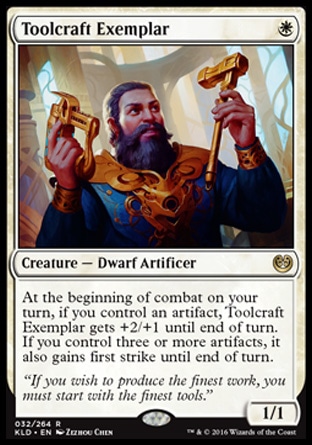
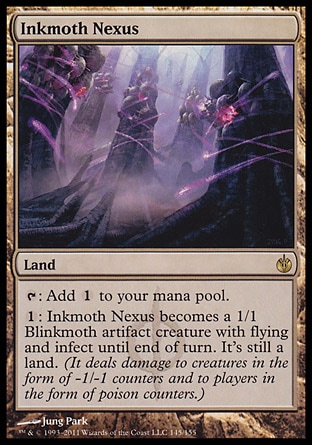
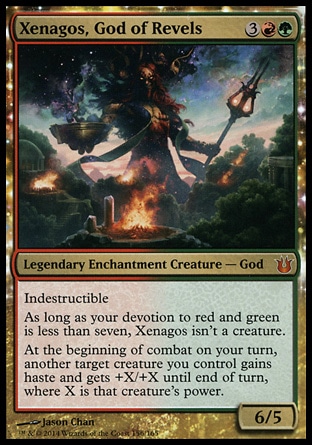
In order to choose the Heart of Kiran as the target for ability of Xenagos God of Revels Heart of Kiran must be a creature at the time when the trigger goes on the stack and that means you need to crew the Vehicle in the main phase.
After the active player would pass, the nonactive player gets priority and can act:
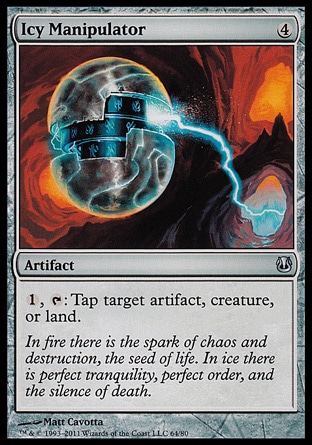
Just about time for the nonactive player to tap his opponent’s creatures, so that they are unable to attack. Why?
First, if you do that during the main phase, the opponent may find other things to cast, because a player has many more options in his or her main phase than at any other moment.
Second, you cannot postpone this any longer, as this is the last chance to do so before attackers are declared.
NB: Creating a regeneration shield does not tap a creature!
Declare attackers step
“A Clash of Kings” by George Martin
This step begins straight from declaring attackers. This is a turn-based action. Such actions do not use the stack, neither player gets priority when they are performed, so they cannot cast spells, activate abilities, or perform special actions. All those require having priority which is given to the active player only after turn-based actions have been performed and all triggers that went off so far have been put onto the stack. If there are multiple, they are placed on the stack in APNAP order, with each player in that order placing his or her triggers in the order he or she chooses.
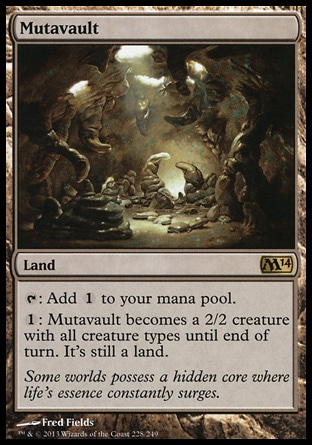
It’s too late to cast creatures with Flash or animate permanents to declare them attackers. You should have done so in the previous step. You will of course be able to do all that, but only after attackers are declared.
Aight, so, it is time to declare attackers. Only creatures may attack. They may attack only opponents and Planeswalkers under their control. Remember this, or even take a note:
506.3. Only a creature can attack or block. Only a player, a planeswalker, or a battle can be attacked.
Note that in a Two-Headed Giant game attackers are declared as a team and are attacking a specific player or planeswalker. If a player does not specify who a creature is attacking, the default is that their creatures are attacking the opponent directly in front of them.
The active player may only declare untapped creatures as attackers (they can't also be battles) and only those that were under his or her control continuously since the beginning of his or her turn (“summoning sickness”). The last rule has no effect on creatures with Haste. For “animated” permanents it doesn’t matter for how long they have been creatures. What matters is how long and how continuously you have controlled that permanent.
Smuggler’s Copter must be an untapped creature and must be under your control (even in the pumpkin form) continuously since the turn began.
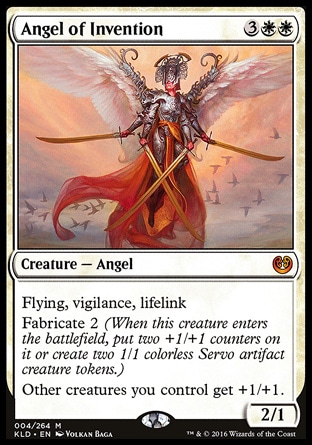
A creature with Vigilance doesn’t tap when it is declared attacker. However, a tapped creatue, with or without vigilance, may normally not be declared attacking.
For each attacking creature, the active player indicates which which player, planeswalker, or battle that creature is attacking. After the object of attack is chosen for each attacking creature, all of them are checked for the legality of attack:
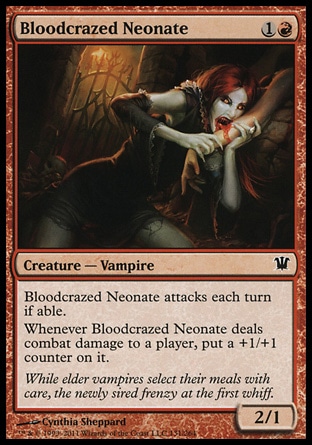
Bloodcrazed Neonate must attack each turn if able. If you do not declare her an attacker when no other restrictions exist, you will have to go back to declaring attackers and choose her as well.
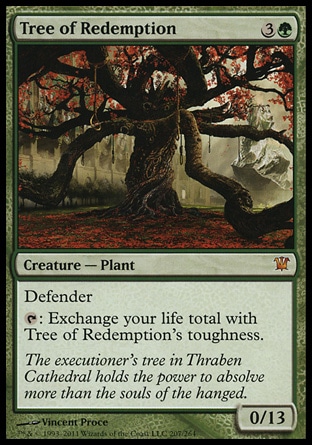
Tree of Redemption cannot attack at all because of the Defender ability. In order to declare it an attacker, you would need to remove that ability somehow, or get an effect that neutralizes it.
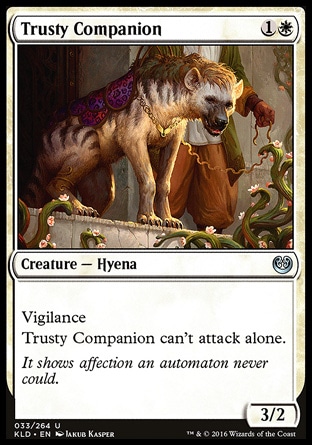
Trusty Companion cannot attack alone (it’s probably too afraid).
When you determine whether an attack is legal you must ensure that the maximum possible number of requirements is met without breaking any rules or restrictions. If that is not the case, the set of attackers is considered illegal and the player has to return to the turn-based action of declaring attackers and choose them so that the set is legal.
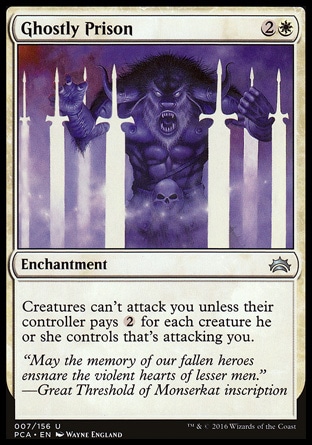

If you need to pay some cost in order for a creature to attack, you are not obliged to do so, even if in the case you had done, the number of matched conditions would increase.
For instance, if you control a small Bloodcrazed Neonate and a massive flying Olivia Voldaren, you have resources to get only two mana, and the cunning opponent controls Ghostly Prison, you are not obliged to pay mana to attack with the Neonate even though she must attack if able. It is entirely legal to declare only Olivia an attacker and pay for her.
After the set of attackers passes the legality check, all attacking creatures are tapped save for those that don’t require tapping when attacking, Note the cause-effect relation in this case: the creature is tapped because it attacks, not attacks because it is tapped! Tapping an attacking creature is not paying a cost.
If you need to pay a cost for an attacking creature, it is determined and set. The cost does not necessarily consist of mana alone. If the cost does include mana, it’s time to activate mana abilities in order to pay the cost for attacking, if such a cost exists.
Now we can pay the cost:
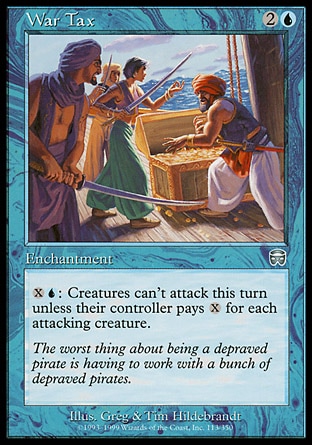
The effect of War Tax’s ability sets a cost of attack in mana for all creatures.
Floodtide Serpent’s ability requires the player to return his or her enchantment from the field to the hand.
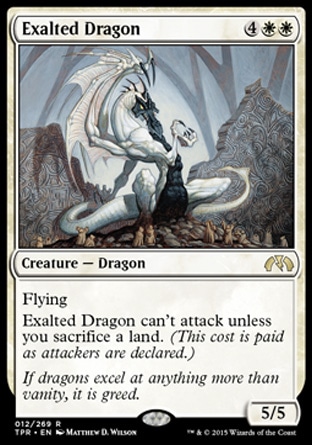
Exalted Dragon is the greediest of them all, its attack cost is sacrificing a land.
Only after this the creature declared as attacker is considered attacking, as long as it is still controlled by the active player. It remains attacking until it leaves combat or the combat phase ends.
This is the triggering event for all triggers saying “whenever… attacks”. If you return an enchantment with such a triggered ability as a cost to attack with Floodtide serptent, the trigger will not go off, because at the moment the creature became attacking, the enchantment permanent was not on the battlefield any more.
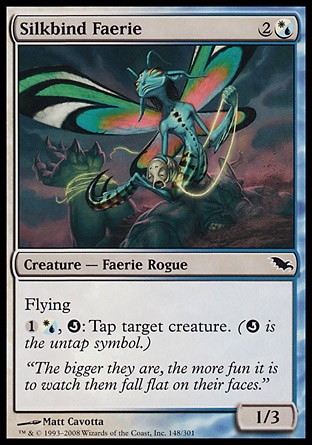
Untapping a creature after it has been declared attacking does not change its combat status.
If you declare Silkbind Faerie an attacker, then, without passing priority to your opponent, activate her ability to tap a potential enemy blocker, she will still remain attacking.
Finally, the triggered abilities that went off so far are placed onto the stack and the active player gains priority. Only now does he get the opportunity to cast a spell, activate an ability or perform a special action… well, or pass priority to the opponent.
Annihilator, Battle cry and other triggers go off when the related creature is declared attacking. The abilities go onto the stack, then the active player gets priority.
Hero of Bladehold has two triggers that go off simultaneously, it is important to place them in proper order on the stack. The tokens will get the bonus from Battle cry only if they are already on the battlefield by the time it resolves. Thus, it is preferable to place the Battle cry trigger onto the stack first, then the one creating tokens above it.
Creatures that are put onto the battlefield attacking have never been declared attackers. The game treats them as attacking, but they never attacked. Somewhat bizarre, I know.
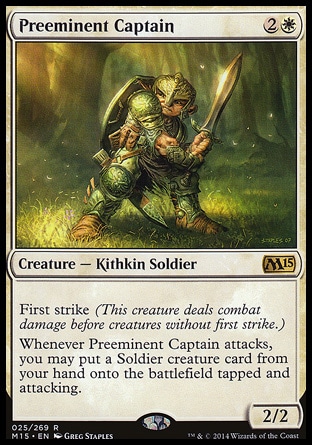
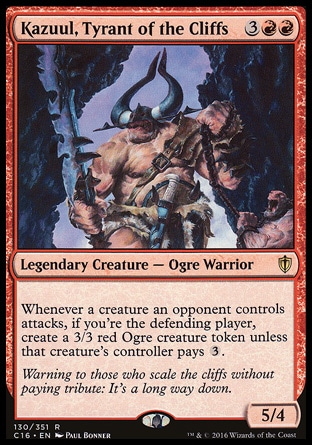
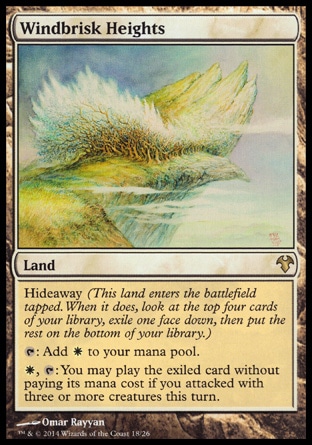
Preeminent Captain “brings company” when his ability resolves, a soldier is put on the battlefield attacking. It was never declared an attacker, and in the game terms, it never attacked. The active player chooses the object of attack for the soldier. This choice does not depend on whom Preeminent Captain is attacking.
When such a soldier appears on the battlefield, Kazuul, Tyrant of the Cliffs’ ability doesn’t trigger. The effect of Gideon Jura’s first ability doesn’t affect it.
If you attack with two Preeminent Captains and use the trigger or triggers to put more attackers on the battlefield, you cannot activate the ability of Windbrisk Heights. There really are three or more attackers, but only two of them attacked.
508.4b. If the effect that states a creature is attacking specifies it's attacking a certain player, and that player is no longer in the game when the effect resolves, the creature doesn't become an attacking creature. The same is true if the effect specifies a creature is attacking a planeswalker or battle and that permanent is no longer on the battlefield or is no longer a planeswalker or battle when the effect resolves.
This step is very important for the defending player. This is where he or she has the opportunity to add potential blockers to the crew.
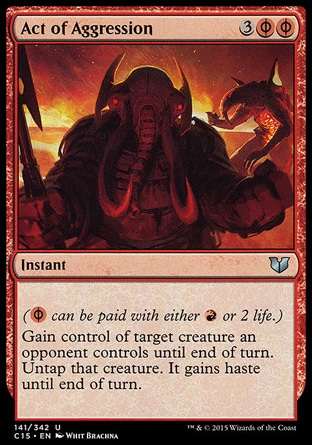
This is a good time to “snatch” an attacker, to block with it later and get rid of two of opponent’s creatures.
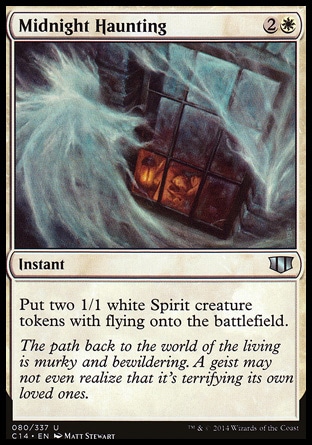
There are some blockers that the opponent wasn’t expecting. Hopefully.
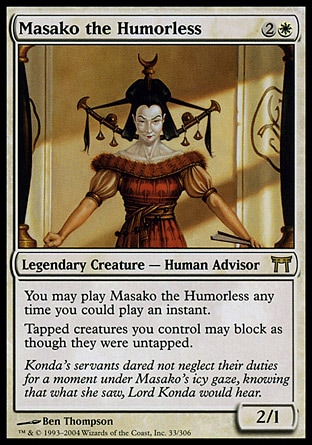
Mwa-ha-ha! Someone got excited when we attacked with the whole team!
Don’t forget that the cunning opponent can also deal with all these surprises before blockers are declared. He will get priority too, after you play any tricks from your sleeve.
If no creatures are declared attackers, and no attacking creatures appear on the battlefied, the next two steps of the combat phase are skipped.
Declare blockers step
Just as with the previous step, this one begins with a turn-based action. Triggers and priority are handled in the same way as in the previous step, too, i.e.
- the defending player chooses creatures to block creatures attacking that player, planeswalkers they control, or battles they protect;
- the triggers reacting to creatures blocking go onto the stack and
- only after this the active player gets priority and may take an action.

Masako the Humorless’ effect allows all your creatures to block even if they are tapped.
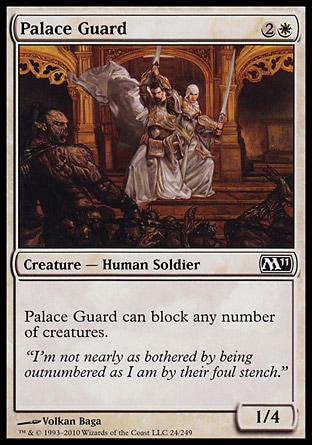
Palace Guard may block any number of creatures.
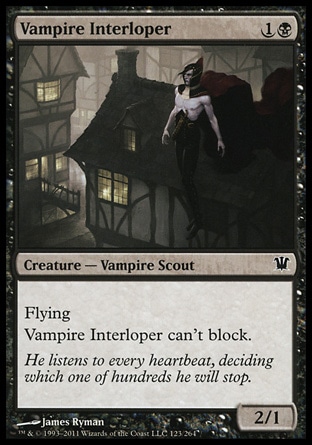
Vampire Interloper simply can’t block at all.
Restrictions may come from evasion abilities, such as Flying, Indimidate or Landwalk; effects like “this creature cannot block” or “blocks each turn if able”, and abilities like Protection.
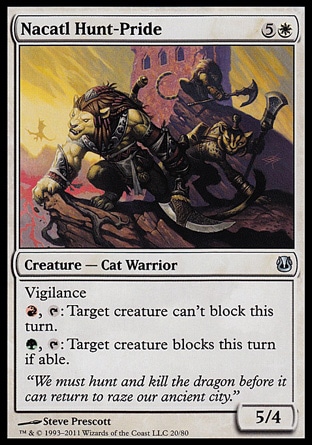
The abilities of Nacatl Hunt-Pride allow to prevent a creature from blocking, or on the contrary, force it to block.
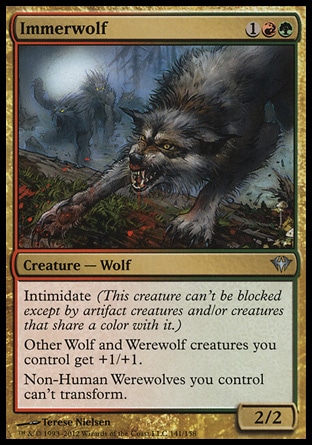
Immerwolf may be blocked only by creatures that share a color with it or by artifact creatures.
A creature equipped with Spirit Mantle may not be blocked by a creature, but you can make it blocked with an effect of a spell, such as Curtain of Light.
All these abilities are taken to account only while blockers are declared. If such abilities and effects appear after the creature has blocked, they have no effect (Protection still affects the way damage is dealt though).
When defining the legality of a block, same as with declaring attackers, you need to arrange everything so that the number of requirements met is the biggest possible without breaking any rules or restrictions. If that is not true, the set of blockers is considered illegal, and you will need to reassign blockers from start.

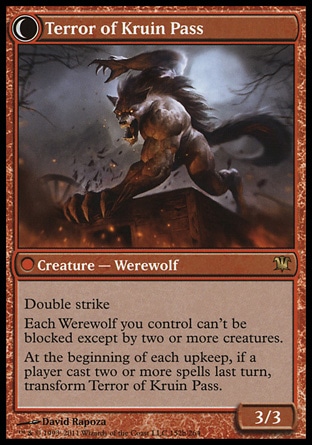
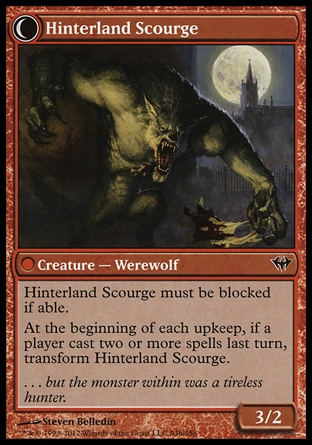
The cunning opponent attacks you with three creatures: Bloodcrazed Neonate, Terror of Kruin Pass and Hinterland Scourge. You control three creatures without abilities (so called Vanilla creatures).
You must block Hinterland Scourge, that is a requirement. According to the restrictions, Werewolves under the opponent’s control may be blocked by two or more creatures. That means that in order to ensure the maximum number of requirements is met and no rules and restrictions are broken, you must block Hinterland Scourge with two creatures. Your third creature may block either Bloodcrazed Neonate or Hinterland Scourge, or not block at all, this is optional, but it cannot block Terror of Kruin Pass as that would break a restriction.

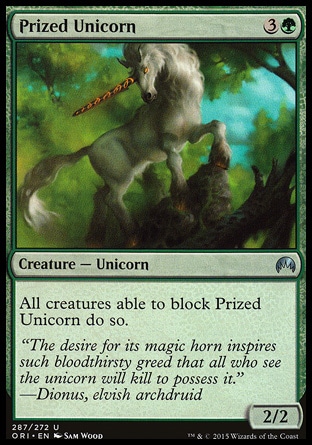
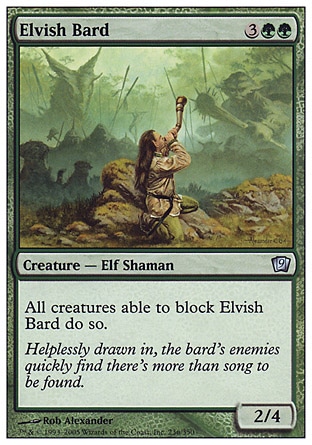
The cunning opponent attacks you with two creatures: Prized Unicorn and Elvish Bard. If you control Palace Guard, you will need to block both with it and lose it :(
After the legality of the block has been checked, the cost for blocking is defined and paid, if any. Then all creatures announced as blockers are considered to have blocked. The attacking creatures that have been assigned blockers are considered blocked. Attacking creatures that have not been assigned any blockers are not blocked. All these statuses are saved till the end of combat phase, or till the creature leaves combat, or till an effect explicitly changes this status ( Curtain of Light).
After this, removing a blocker does not change the state of an attacking creature. It will remain blocked.
Finally, we get to the triggers going off when creatures attack or block. I recommend to read about those in detail. After SBA are checked and performed, and the triggers are placed onto the stack, the active player gets priority, and there come all possible combat tricks: pumping your creatures with Giant Growth, shrinking enemy creatures with Turn to Frog, granting abilities modifying the way damage is dealt ( Swift Justice, Chorus of Might), and destroying enemy creatures or saving your own. It’s worth noting that if an attacking creature is removed from combat, the relative order of dealing damage remains unchanged for the remaining creatures.
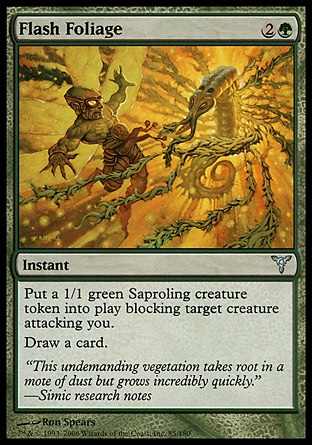
Note that this Saproling was never declared as blocker, so it has some perks. It can completely ignore evasion abilities, you may easily target a creature with flying to be blocked with it.
506.3d. If an effect would put a creature onto the battlefield blocking but the creature it would block isn't attacking the entering creature's controller, a planeswalker that player controls, or a battle that player protects, that creature does enter the battlefield, but it's never considered to be a blocking creature.
506.3e. If an effect would put a creature that's also a battle onto the battlefield attacking or blocking, that permanent enters the battlefield but it's never considered to be an attacking or blocking creature.
506.3f. If a resolving spell or ability would cause a battle to become an attacking or blocking creature, that part of the effect does nothing.
Combat Damage step
First, the active player announces how much damage the attacking creatures assign. Then the defending player does the same for the blocking creatures. Then all damage is dealt simultaneously. This and only this damage is combat damage.
Assigning and dealing combat damage does not use the stack. Players do not get priority between assigning and dealing combat damage, and cannot do anything until it is dealt.
After this, SBA are checked, and creatures with lethal damage are put into their owner’s graveyards, triggered abilities that went off by this time go onto the stack, and the active player finally receives priority and may take an action.
If creatures with First or Double strike participate in combat, the combat phase is extended to have another combat damage step. The rules of dealing combat damage become modified.
Assigning combat damage obeys certain rules:
Each attacking and each blocking creature assigns damage equal to its power. If a creature’s power is less or equal to zero, it does not assign damage at all.
Unblocked creatures assign combat damage to the player, planeswalker, or battle it's attacking.
If the object of attack is removed from combat, damage is not assigned.
Why a permanent may have left combat?
506.4. A permanent is removed from combat if it leaves the battlefield,
- if its controller changes,
- if it phases out,
- if an effect specifically removes it from combat,
- if it's a planeswalker that's being attacked and stops being a planeswalker,
- if it's a battle that's being attacked and stops being a battle, or
- if it's an attacking or blocking creature that
- regenerates (see rule 701.15),
- stops being a creature, or
- becomes a battle.
A creature that's removed from combat stops being an attacking, blocking, blocked, and/or unblocked creature. A planeswalker or battle that's removed from combat stops being attacked.
506.4d. A permanent that's both a blocking creature and a planeswalker that's being attacked is removed from combat if it stops being both a creature and a planeswalker. If it stops being one of those card types but continues to be the other, it continues to be either a blocking creature or a planeswalker that's being attacked, whichever is appropriate.
506.4e. A permanent that's being attacked that is both a planeswalker and a battle is removed from combat if it stops being both a planeswalker and a battle. If it stops being a battle but is still a planeswalker, it is removed from combat only if it is not controlled by its protector. If it stops being a planeswalker but is still a battle, it is not removed from combat. It continues to be a battle that's being attacked.
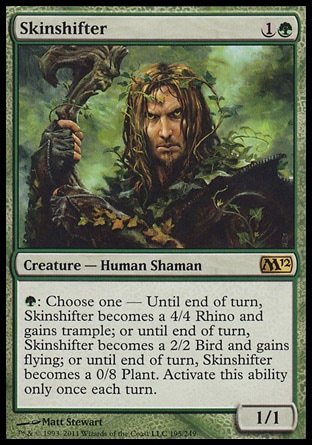
After activating and resolving its ability, Skinshifter assigns combat damage regardless of its power value. Mind that Trample modifies the rules of damage assignment.
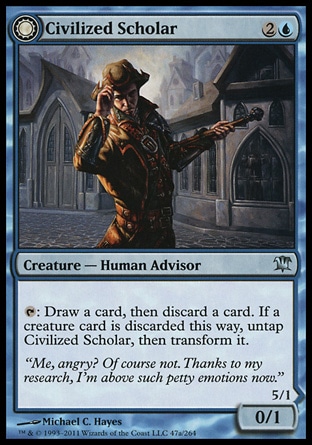
If for some reason Civilized Scholar attacks, it will not assign damage since its power isn’t positive. The same may happen to a larger creep that has been “shrinked” (Dismember).
If you attack an enemy Planeswalker but the cunning opponent returns it to the hand upon getting priority ( Quicksilver Geyser), your creature continues to attack the absent Planeswalker and will assign no damage.
A blocked creature assigns damage to creatures blocking it;
if the creatures aren’t there, the attacker assigns no damage.
If you somehow remove a blocker (Unsummon, Terminate), the attacking creature is still blocked and deals no damage.
If the attacking creature is blocked with exactly one creature, it assigns all of its damage to that creature, regardless of its toughness.
If a 1/1 creature faces a 10/10 in combat, the former deals 1 damage to the latter, and the latter deals 10 damage to the former. If the 10/10 beastie has Lifelink, its controller gains 10 life.
If two or more creatures are blocking it, it assigns its combat damage to those creatures divided as its controller chooses among them.
Example: An attacking Elvish Regrower (a 4/3 creature) is blocked by Vampire Spawn (a 2/3 creature) and Helpful Hunter (a 1/1 creature). Elvish Regrower’s controller can assign all 4 damage to the Hunter, 1 damage to the Spawn and 3 damage to the Hunter, 2 damage to each creature, 3 damage to the Spawn and 1 damage to the Hunter, or all 4 damage to the Spawn.
Creatures with Trample are an exception to this. The ability modifies the rules of assigning damage.
When figuring whether the damage is lethal, we take to account damage already marked on the creature, and damage to be dealt by other creatures in the same combat. Effects like Protection that could modify the number of damage that would actually be dealt are not taken to account.
One damage from a creature with Deathtouch is considered lethal.
The afore-mentioned also applies to assigning damage by blocking creatures, save for Trample.
End of Combat step
First of all, all abilities saying “at the end of combat” trigger and are put on the stack, then the active player gets priority. Players may cast spells and activate abilities.
The Angel token generated by Geist of Saint Traft’s ability is exiled precisely in the end of combat step.
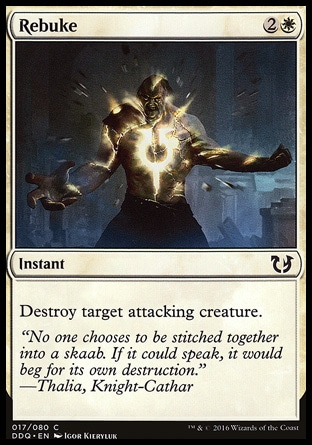
The defending player’s last chance to target an attacking creature is in the end of combat step.
At the end of End of combat step (clumsy, I know) all creatues and Planeswalkers are removed from combat, they cease to be attacking or blocking.
Homework
How many steps can a combat phase have?
— Declaring attackers!
— Bounce this one, tap that one.
— No attacks.
What happens?
A germ token equipped with Batterskull attacks. It is blocked by Bear. How much life does the active player gain?
You activate Ninjutsu. In response, the cunning opponent casts Flash Foliage and blocks the creature. What happens?
Now, I got a real surprise for you. All of the questions below were asked by players. You need not only to answer a question correctly, but also figure out what exactly you are being asked. Let me remind you that casual answers in the forums may be significantly different, in form and sometimes in content, from answers given by a judge in a tournament.
Please explain when do I need to specify who I am attacking with my creatures? Do I point out the objects of attack in the declare attackers phase, or do I announce whom I deal damage to, a player or a Planeswalker, in the damage assignment phase?
Please explain what should happen if I attack with a creature and then the defending player gains control of it. If the attacking creature has vigilance, can that opponent block another attacking creature of mine with it?
I have set a creature to attack, then my opponent has set a creature to defend, and in the declare blockers step I cast an instant spell that gives my creature “Flying” ability. The opponent’s creature does not have flying nor any abilities to block creatures with flying. What happens?
Say, a creature with flanking is blocked by two simple creatures. Will -1/-1 be put on both?
Suppose a situation:
I attack with a 3/3 creature without abilities. It is blocked by two creatures: 2/3 and 2/4, also without abilities. No one casts anything in the declare attackers and blockers steps. Here’s the question:
Can I assign damage in the following way: one damage to the 2/3 dude and 2 damage to the 2/4? (I wanna cast Pyroclasm later to finish them off).
I just heard somewhere that damage is dealt in a certain manner, that in order to get to the next creature, you have to deal lethal damage to the previous one. And my friend states that damage can be assigned at will.
Both I and my opponent are at 1 life. The opponent attacks with his creatures, I have nothing to defend with, so I am about to die. After attackers are declared I respond with an instant spell that deals damage to my opponent. Since the stack is taken apart beginning with the last card to have gotten there, first, my instant spell goes off and the opponent is dealt damage. According to this, he dies and when the stack checks the attacking creatures, they no longer exist since their owner has died. I win. Did I get this thing right?
Please explain how should I declare attackers correctly if an opponent has an Ensnaring Bridge on the field and 1 card in hand. I have a 1/1 creature and a 0/1 creature with exalted. I attack with the 1/1 creature, he drops an instant card from hand, he has 0 cards. Can I add my 0/1 creature to attackers? Or the fact that he cast a card from hand does not impact my attacking creature, and Ensnaring Bridge will not prevent my attack?
Here’s the deal: I charge at my opponent with a 2/2 creature, he blocks with a Sakura-Tribe Elder. Block is successful, then he uses the ability. He says he blocked the attack of my 2/2 and got a land too. He accounts this to the fact that lethal damage is kinda marked on the Elder, but sacrifice doesn’t use the stack. Is that ok?
During the combat phase I declare Metallurgeon as a blocker, which can regenerate for tap (my opponent states that I cannot tap while blocking). My question is, can I use this ability straight after declaring it a blocker? I believe I can, since an activated ability may be used any time I have priority, including the moment when blockers are declared. Please settle our dispute, with citing rules if possible.
A player has an Ajani’s Pridemate on the field. He attacks with a Steward of Valeron equipped with a Batterskull. It is blocked by two Bears. How many counters will the Pridemate get?
Beastmaster Ascension lets us place counters on it when our creatures attack. But here is a question: what happens if we attack with not one but multiple creatures in the same turn, will counters be put for each attacking creature or just for one?!
Did I get this right, if Laccolith Grunt is blocked, he can deal damage equivalent to its power to the creature, but then it doesn’t deal combat damage?
Royal assassin. The ability of this character is to kill target tapped creature. Question is, can the ability be used when I am attacked, i.e. a player tapped a card (attacked), can I skip block and just kill by using the ability?
Infiltration Lens if multiple creatures block a creature with lens, do I draw 2 cards per blocking creature?
The creature Blastoderm attacks a player. The player blocks Blastoderm with the creature Elvish Eulogist. Damage is dealt, Blastoderm takes 1 damage, Elvish Eulogist takes 5 damage. Can the player in control of Elvish Eulogist sacrifice it after damage and gain life?
The ability: “Whenever Cyclops Gladiator attacks, you may have it deal damage equal to its power to target creature defending player controls…” This text doesn’t have the “instead” word (like, “instead, you may have it deal…”). Since it isn’t there, I believe that when the Cyclops attacks he can deal damage to an opponent’s creature and continue attacking the same player. Please confirm, am I right?
If I assign Vampire Hexmage a blocker in the declare blockers step blocking a Craw Wurm, and then at the end of declare blockers step I sacrifice Vampire Hexmage, will Craw Wurm not be able to damage the player?
If a 7/7 creature has trample and it blocks another 5/5 creature, will the owner of the attacking creature take damage worth 2 life?
If a creature has deathtouch and when damage is dealt it has 0 power, will deathtouch trigger? The creature dealt 0 damage by it, will it die?
I noticed that players often don’t tap creatures when using regeneration. A bad example is catching — I started doing the same. Is it careless play, or has there been a time in Magic when regeneration did not require tapping?
Here’s a situation (I’ll take simple creatures without names): My opponent has a simple 3/3 elephant. I have a 1/4 wall, he attacks and I block => nobody kills anyone, the opponent plays the card Seize the Day, untaps his elephant and attacks me again. Question is, can I block the elephant with the wall again or not?
Suppose I want to damage my opponent with my creature, like, really badly. I attack with it, the opponent has no creatures. I pass priority, he casts a creature with Flash, passes priority to me, I don’t counter. It enters the battlefield. But I have, say, Lightning Bolt. Here is the question. In terms of game mechanics, do I have a chance to bolt it down before the opponent blocks with it?
Angelic Arbiter was on the battlefield… And then the opponent destroys (kills etc.) the Angelic Arbiter with his treacherous spell… And conceives an attack… Here is the question: can the opponent attack in that turn (the turn where he destroys it (kills etc.))
Vampire Hexmage attacks, blockers are assigned in this order:
1. Wall of Omens
2. Trinket Mage
In combat damage step, the active player assigns damage at his will: 2 to the mage and 0 to the wall or 2 to the wall and 0 to the mage, or strictly according to the assignment order of the blockers, so 2 to the wall and 0 to the mage?
What happens if I have a Prized Unicorn and I attach a Gorgon Flail to it, and my opponent has several untapped creatures, do they have to block my creature? Then another question: will they all die, or do I apply this effect (deathtouch) to just one creature?
Did I get this right: first is the declare attackers step, then the declare blockers, then the damage calculation step, and an end phase after that?
If I declare my creature attacking and in declare blockers step they declare a blocker, then I destroy the blocker during the declare blockers step, will the attacking creature deal damage?
If an opponent attacks me with multiple creatures including a Prized Unicorn, can I escape the Unicorn’s trigger by using Goblin Tunneler’s effect on it? And is it correct that the Goblin’s ability cannot be used on the Unicorn if it has +1/0?
Say, Kor Hookmaster is declared attacking. It is blocked by the Frogmite creature, after blockers are declared the active player casts the instant Mighty Leap giving +2/+2 and Flying to the Hookmaster. Will they deal damage to each other, or will the damage be carried over to the “void”?
Translated by Witas Spasovski

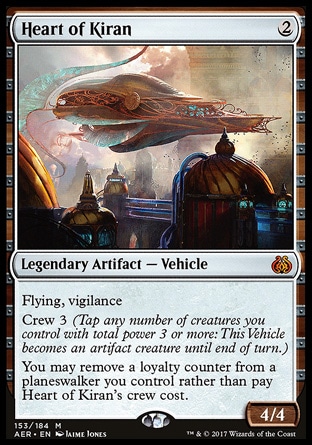
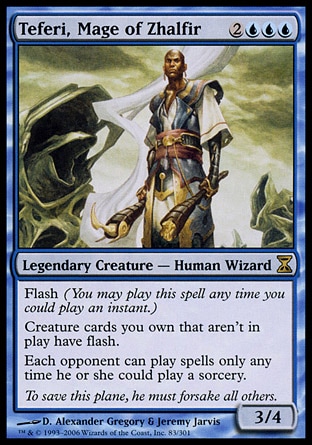
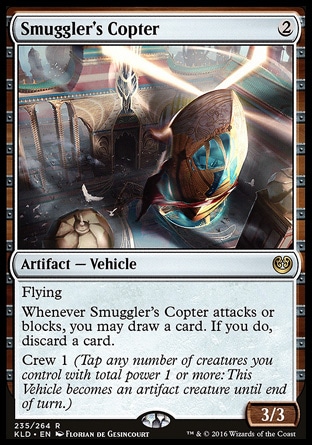
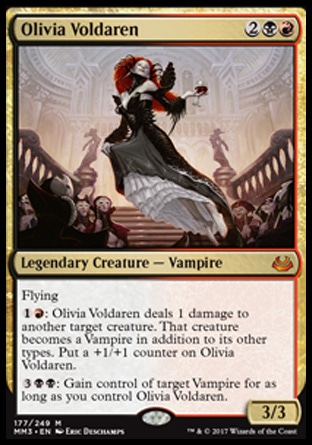
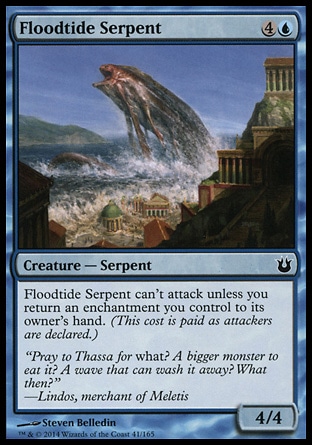
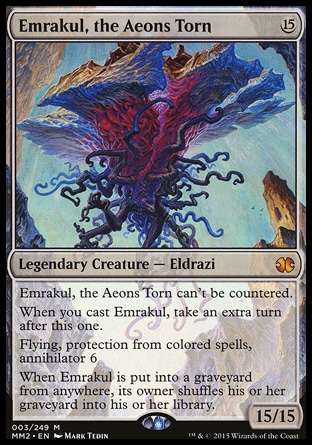
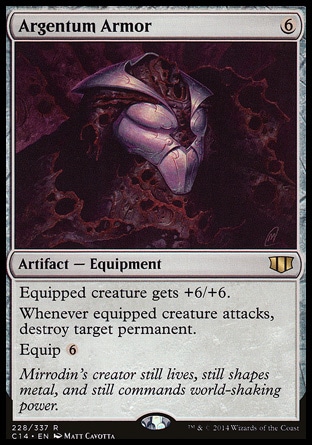
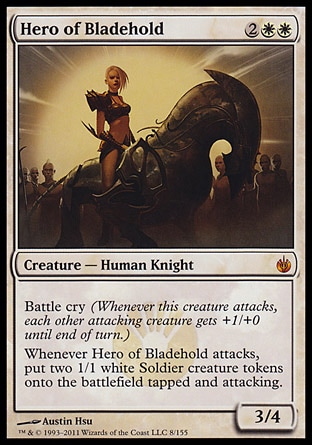
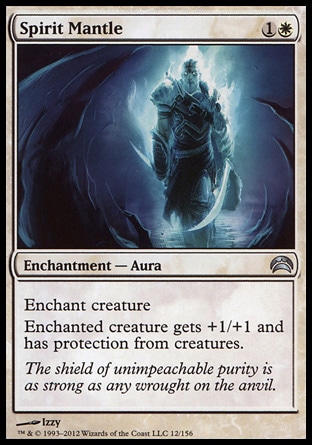
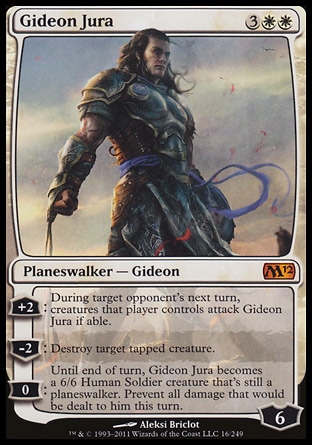
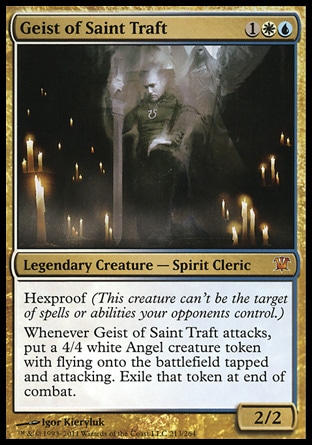
If you don’t control an artifact, the ability of Toolcraft Exemplar won’t trigger. To make this happen, you need to “animate” the Inkmoth Nexus during the main phase.